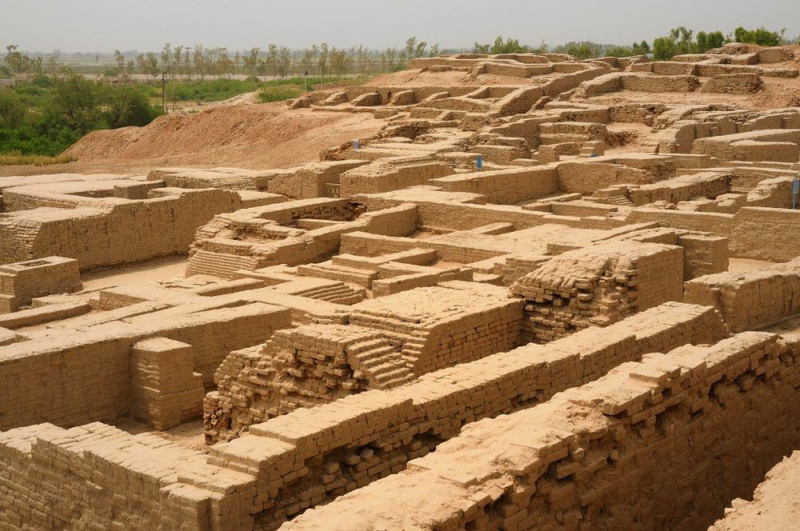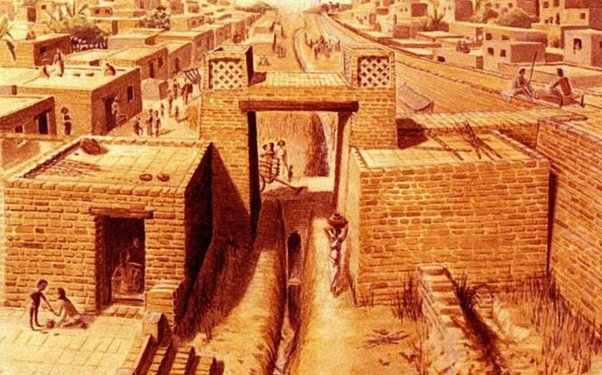Well-structured living area and housing
The Indus Valley Civilization built its dwellings and living spaces in a well-organized way. For construction, they utilized lime and baked bricks of uniform size. Bricks that were resistant to moisture were used in the city planning at the time, giving the dwellings and the entire city a well-planned appearance.
The cities were planned in such a way that it appeared to have been done with dedication. The water storage was situated on the lower ground, while the residential portions were situated on the upper lands. By 2600 BC, Mohenjo-Daro, Harappa, and other significant Indus Valley cities had been constructed with blocks that were divided by a grid of straight, east-west, and north-south running streets. Small lanes separated each block.
Primarily in high traffic areas like toilets, perfectly kept buildings with outstanding sanitation were on exhibit and in use. Many homes also had wells, and the drains were all directly connected to the main conduit under the street.













